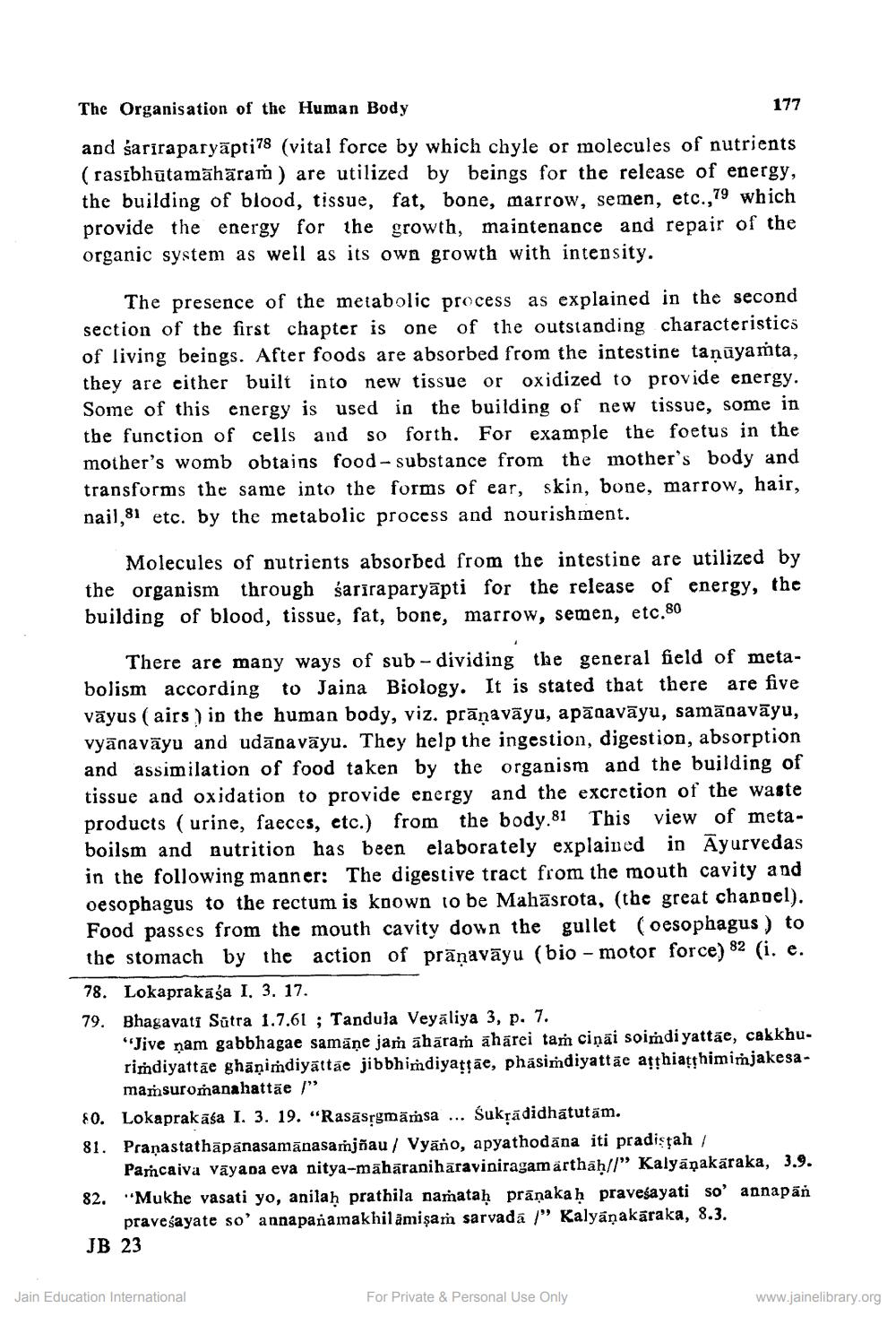________________
The Organisation of the Human Body
177
and sariraparyäpti78 (vital force by which chyle or molecules of nutrients (rasıbhutamāhāram) are utilized by beings for the release of energy, the building of blood, tissue, fat, bone, marrow, semen, etc.,79 which provide the energy for the growth, maintenance and repair of the organic system as well as its own growth with intensity.
The presence of the metabolic process as explained in the second section of the first chapter is one of the outstanding characteristics of living beings. After foods are absorbed from the intestine tanüyamta, they are either built into new tissue or oxidized to provide energy. Some of this energy is used in the building of new tissue, some in the function of cells and so forth. For example the foetus in the mother's womb obtains food - substance from the mother's body and transforms the same into the forms of ear, skin, bone, marrow, hair, nail, 81 etc. by the metabolic process and nourishment.
Molecules of nutrients absorbed from the intestine are utilized by the organism through sariraparyāpti for the release of energy, the building of blood, tissue, fat, bone, marrow, semen, etc.80
There are many ways of sub-dividing the general field of metabolism according to Jaina Biology. It is stated that there are five vāyus ( airs ) in the human body, viz. prāņavāyu, apānavāyu, samānavāyu, vyānavāyu and udāna vāyu. They help the ingestion, digestion, absorption and assimilation of food taken by the organism and the building of tissue and oxidation to provide energy and the excretion of the waste products ( urine, faeces, etc.) from the body.81 This view of metaboilsm and nutrition has been elaborately explained in Ayurvedas in the following manner: The digestive tract from the mouth cavity and oesophagus to the rectum is known to be Mahäsrota, (the great channel). Food passes from the mouth cavity down the gullet (oesophagus) to the stomach by the action of pränaväyu (bio - motor force) 82 (i, e.
78. Lokaprakāśa I. 3. 17. 79. Bhagavati Sūtra 1.7.61 ; Tandula Veyāliya 3, p. 7.
"Jive nam gabbhagae samāṇe jam ahārar ahärei tań ciņai soimdiyattae, cakkhu. rimdiyattae ghānimdiyattae jibbhimdiyattae, phasimdiyattae atthiatthimimjakesa
mamsuromanahattāe /” 80. Lokaprakāsa I. 3. 19. “Rasāsrgmāmsa ... Sukțădidhātutäm. 81. Pranastathapanasamanasarjñau / Vyano, apyathodāna iti pradiştah /
Parcaiva Vāyada eva nitya-mahāraniharaviniragam ärthah//" Kalyāņakäraka, 3.9. 82. "Mukhe vasati yo, anilah prathila namataḥ prāņakah praveśayati so' annapan
praveśayate so' annapanamakhilämişam sarvada | Kalyanakāraka, 8.3. JB 23
Jain Education International
For Private & Personal Use Only
www.jainelibrary.org




